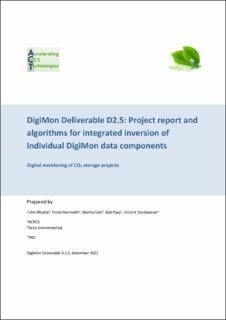| dc.description.abstract | Different data types carry different information about the subsurface, so there should be advantages in combining information from different data types when seeking to infer subsurface properties such as changes in CO2 saturation and pressure with time. We have considered the following data types: conventional seismic data; gravimetric data, and; distributed acoustic sensors (DAS) data. These data types, and the corresponding forward-modelling techniques, are described in Vandeweijer et al., 2021, Bhakta et al., 2023.
An important aim for the DigiMon project is to qualify a cost-efficient monitoring system for use with large-scale CO2 sequestration. It is therefore of particular interest to assess if it is possible to obtain satisfactory monitoring results without using the most acquisition-expensive data type(s). Acquisition of conventional seismic data is considerably more costly than acquisition of gravimetric and DAS data combined. In addition to comparing the monitoring performances of the individual data types, we have therefore also compared the performance of gravimetric and DAS data combined, to that of conventional seismic data.
We have developed a modelling framework for geophysical monitoring with the abovementioned geophysical data types that in addition to a best estimate of the monitoring target also quantifies the uncertainty in that estimate. The framework uses an ensemble-based implementation of Bayesian (and sequential Bayesian) statistics to achieve this at an affordable computational cost for the numerical examples studied. If the correct monitoring results are known, which they will be if a study with synthetic data is conducted, we can therefore assess with what certainty a particular data type produced better results than another data type for the study example in question. | en_US |
